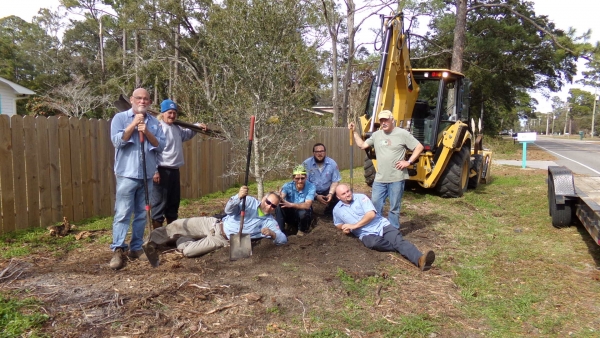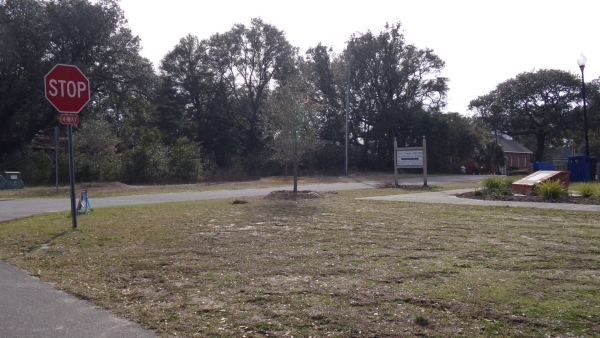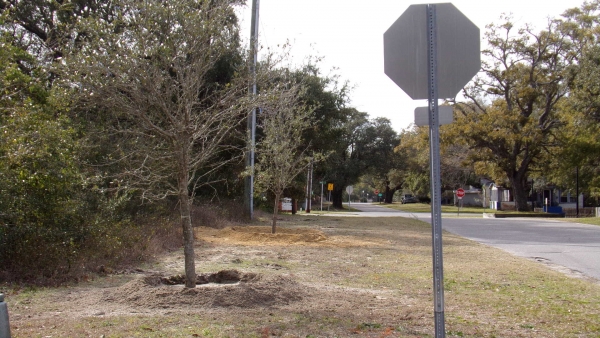
Southport Forestry Committee Members
Members are appointed for a two-year term.
| Member | Contact | Revised Expiration |
|---|---|---|
| Scott A. Len, Chairman | [email protected] 910-831-1222 | June 2026 |
| Fred Fiss | [email protected] 910-269-6901 | June 2025 |
| Marianne Huntley | [email protected] 201-247-2927 | June 2025 |
| Roxie Smith | [email protected] 910-363-4002 & cell 917-993-0447 | June 2024 |
| Dina Rousset | [email protected] 919-423-2770 | June 2025 |
| William “Bif” Bream | [email protected] 919-608-6325 | June 2025 |
| Jerry Donaldson | [email protected] 910 457-6572 | June 2024 |
| Heather Kos | [email protected] 704-277-1155 | June 2025 |
| Michael McGhee | [email protected] 919-729-7211 | Consulting Member |
| Alderman Karen Mosteller | [email protected] (704) 560-2443 | Board Liaison |
| Harlan “HP” Pyles, Code Enforcement Officer | [email protected] (910) 363-7670 | Staff Liaison |
| Maureen “Mo” Meehand, City Planner | [email protected] (910) 457-7900 ext. 1043 | Staff Liaison |
NOTE: Article V. Section 1: Meetings are to be held the 2nd Tuesday of each month, 5:00 p.m. in the Indian Trail Meeting Hall unless otherwise posted. All meetings shall be posted in accordance with the N.C. Open Meetings Law by the City Clerk. Updated 04/26/18
Forestry Committee Objectives
The Forestry Committee is committed to the preservation, advocacy and education for the city with regards to city trees and issues by:
- Protecting existing trees
- Tree replenishment
- Public education
- Other functions related to the community’s forest environment
The Committee provides support and a level of expertise that assists the city and its residents make decisions not only about individual trees, but also about the city’s entire forest and canopy for the long term.

- Arbor Day Celebration (4th Friday in April)
- Representation at Southport Naturefest
- Annual Tree Planting (January or February)
- Pruning of previous year’s new trees
- Informational articles in City Newsletter
- Seminars/Tutorials on Tree Care, etc. (TBA)
- Collaboration with other City Committees to preserve Southport’s Tree Canopy

Southport:
A “Tree City” Since 2003!
Tree City USA Standards
To qualify as a Tree City USA community, FOUR STANDARDS established by the Arbor Day Foundation and the National Association of State Foresters must be met. These standards were established to ensure that every qualifying community* would have a viable tree management program and that no community would be excluded because of size.
- Maintaining a tree board or department
- Having a community tree ordinance
- Spending at least $2 per capita on urban forestry
- Celebrating Arbor Day
Southport has met these standards and has been designated a Tree City USA since 2003.

Call for Southport Tree Champions
The Forestry Committee is bringing back the Tree Champion program, instituted many years ago by Betty Timberlake, a past member of Southport’s Forestry Committee and enthusiastic advocate for Southport’s beautiful live oaks. Recognition as a Tree Champion is for those whose activities demonstrate exceptional consideration for maintaining our distinctive urban forest. Some examples include designing or placing new structures to preserve mature trees, replacing removed trees with more or larger-sized trees than required, educating others about tree care and maintenance, or donating to the purchase of trees for planting on public property.
Recognition is in the form of a Southport Tree Champion certificate presented by the Mayor at an Aldermen’s meeting or Arbor Day Celebration. Anyone may nominate a person or group by downloading the form, or filling it out below, and returning it to the Forestry Committee as indicated on the form. While the nominee or nominator may not necessarily be a resident of Southport, the benefit of the recognized activity must ultimately be to trees in the municipality of Southport or its extra-territorial jurisdiction (ETJ). Let’s recognize those who make positive efforts to preserve our beautiful urban forest.
Tree Champion Form

Southport’s 2024 Arbor Day celebration will be held on Friday, 26 April
See the City of Southport’s Arbor Day 2021 Celebration!
The City of Southport Forestry Committee presented this program in celebration of Arbor Day 2021.
This online program highlights Southport’s beautiful tree canopy and the role that the Forestry Committee plays in supporting and sustaining it. You have a part to play as well!
In addition to seeing a stunning sampling of Southport’s iconic trees, you will learn about Southport’s designation as a Tree City USA and the steps that are taken to ensure that the legacy of our urban forest will be enjoyed by generations to come.

The UDO: Tree Protection and Landscape Preservation
The link below allows you to download an excerpt (chapter 3.18) from the City of Southport Unified Development Ordinance.
Looking for the full Unified Development Ordinance? CLICK HERE

Video Seminars
Available video classes if interested in learning more about trees.
Tree Board University is an online training curriculum for citizens who serve on tree advisory bodies for local governments across the USA. Tree Board U consists of eight courses that you can take at your own pace, and includes videos, written materials, and practical assignments.
eLearn Urban Forestry is a self-led, online, distance learning program geared specifically toward beginning urban foresters and those allied professionals working in and around urban and urbanizing landscapes, including service foresters, natural resource planners, landscape architects, city officials and public works employees.
This course will help participants identify the costs and benefits of a sustainable urban forest. Learn the critical components of an urban forest management plan and how inventories are used in urban forest management. This is a self-paced, highly interactive course to supplement the certification study guide. The lessons are designed for adult learners who cannot attend formal classes and nontraditional learners who respond best to visual, auditory, and hands-on teaching methods.
Educational Materials
NCFS/Forestry Committee report on Franklin Square Park
How to Hire a Professional Tree Care Professional – NC State Extension Publication
Live Oak Society – Louisiana Garden Club Federation, Inc.
TED-Ed Talk: What Happens if you Cut Down All of a City’s Trees?
How to Kill a Tree Through Poor Care
Avoiding Tree Damage During Construction
Summer is here -What’s happening to our trees?
How to Help Your Trees Recover From Drought | Davey Tree
Oak Issues in Southeastern NC – NC State Extension
Hurricane Preparation/Recovery for Trees
Distinguishing Laurel and Live Oaks
Who is responsible for the trees in my community?
Southport Historical Society link to historic trees in Southport (SCRR)
Tree Owner’s Manual – NC Urban Forest Council

Southport is noted for its lovely waterfront, interesting history, and beautiful trees. This guide provides a walking tour primarily of the historic area of Southport near the waterfront and points out some trees, particularly live oaks, that are considered significant for their age, size, beauty, historical significance, or ability to thrive in this harsh coastal environment.
As you follow along the route, we invite you to take photos of yourself near your favorite trees (NO TREE CLIMBING, PLEASE) and hashtag them #TREESOFSOUTHPORTNC for possible inclusion in the City of Southport Newsletter, or on the Forestry Committee webpage.
To find a specific stop, please click on the name of a stop and it will open the route using Google Maps.
Fort Johnston Garrison Lawn
The two large live oaks on the lawn (Quercus virginiana) were transplanted from Sunny Point, the Military Ocean Terminal just north of Southport, as small trees (likely 10 to 20 years old) in 1959, according to local first-hand knowledge, making their ages now in the range of 72 to 82 years. Ages of trees with no known planting histories may be estimated as follows:
C ÷ π = DBH
DBH × GF = estimated age
Where C is trunk circumference in inches at a height of 4-1/2 feet minus 2 inches for the bark, π is 3.14, DBH is the diameter at breast height, and GF is a species-specific growth factor, typically 4 for oak trees. As you can see below, estimates can vary significantly from a known age. Perhaps the growth factor is not appropriate for the conditions in this area. You may like to try calculating the ages of some of the other large trees on your walk, using the given circumferences and the different growth factors.
Circumferences: 138, 144 in. Diameters: 44, 46 in.
Estimated ages using GF4: 173, 181 years. GF2: 87, 91 years
Stop 2
Old City Hall
The Old County Courthouse (later Southport City Hall and, hopefully, soon to be an arts center), built in 1844, was early on graced with two live oaks on the front lawn. After a storm in 2019, an arborist determined that the large limb arching over the entrance and many parts of both trees were suffering from extensive rot; both trees were removed for safety reasons. A new live oak has been planted on the right of the walkway by the Forestry Committee. Although not yet as magnificent as the originals, it will ensure that the character of Southport continues.



Stop 3
East Moore Street next to St. Philip’s Church
Take a slight detour along Moore Street to see the gingko tree (Gingko biloba) to the left of the house, particularly in the fall when the leaves turn a beautiful gold color. It was planted nearly 80 years ago and is uncharacteristically tall. Gingkos were distributed worldwide in the Jurassic age, and their unique fan-shaped leaves have been found in fossilized form, even in North America. DO NOT ENTER THE YARD. THIS IS A PRIVATE HOUSE. There is another gingko recently planted near another part of the tree tour; it’s very small. Can you find it on your walk?* Continue back the way you came and turn right on Dry Street.
Stop Four (Click here for Google Maps)
U.S. Post Office
Looking over the Post Office from Dry Street, notice two large Pecan trees (Carya illinoensis) behind the building. They are common in North Carolina, growing to a considerable height, with deep taproots, which probably help them to weather storms with high winds. They lose their long (9 to 12 inches), spearhead-shaped leaves in the fall and produce nuts, prized by squirrels and people alike.* Can you find other Pecan trees around town?
Along your route…
Can you locate the live oak that has a water oak growing out of the middle of the trunk?


Stop 5
East Nash Street
Look to the left and notice how this street from Howe Street to the Post Office creates for drivers an obstacle course, particularly at night, of large live oaks, growing there from before the street was paved around them.*
Circumferences for six of the large trees: 137, 138, 176, and 193 inches.
Stop Six (Click here for Google Maps)
Franklin Square Park
As you start down the path next to the Masonic Hall notice the large Sabal Palm tree planted long ago on the right. In Franklin Square Park many live oaks were planted in the 1930s, which would make them close to 100 years old. The park sits near the center of a much larger open area once known as The Grove, much of which has since been developed but which still contains some of the larger live oak specimens in town (e.g., see stops 5, 8, 9, and 16). The park is now used for many events in town, although in quiet times benches under the trees provide a shady, serene place for contemplation.* Exit the park from the path and turn right on East-West Street.
Circumferences for some of the live oaks: 99, 108, 124, 127, 142, and 146 inches.
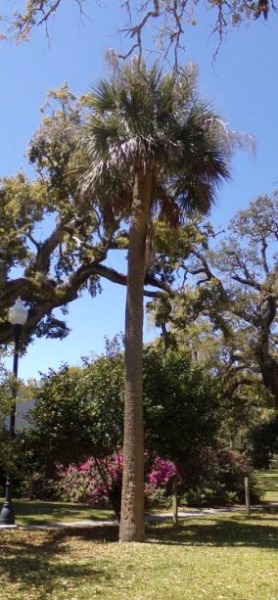

Stop Seven
East West Street near North Atlantic Street
Between the Franklin Square Gallery and the City Gym are four live oaks that appear to grow from a single root system. They are known as the Four Sisters and bring back fond memories to those who attended the old Southport High School (where the Post Office sits today), as these trees were a popular gathering spot.*
Stop Eight
Corner of East West Street and North Atlantic Street
Look to the left and notice the very large live oak on the street near 305 N Atlantic. It is likely one of the original trees in the Grove.*
Circumference: 216 inches.

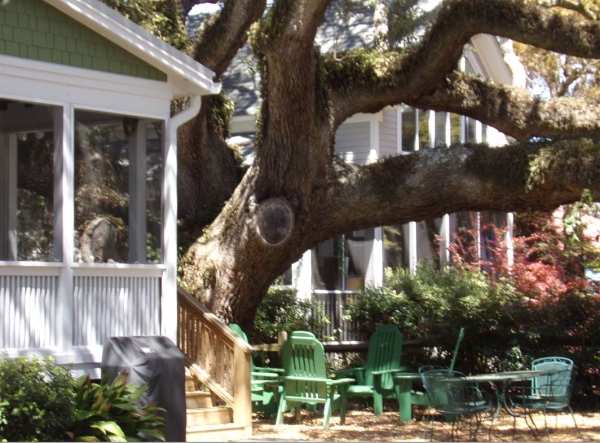
Stop Nine
North Atlantic Street and West Street
The magnificent live oak behind Hubbard House at 216 North Atlantic has been evaluated by experts at the North Carolina Forest Service for possible inclusion in the North Carolina Champion Big Tree Program.* Regardless of the outcome, this is a beautiful specimen. DO NOT ENTER THE YARD. THIS IS A PRIVATE HOUSE.
Circumference:198 inches
At this point you may choose the shorter tour by turning right on North Atlantic Street, taking the next left onto East Nash Street, and resuming the tour at stop 14. Optionally, for a longer walk, continue along East West Street, then turn left on Rhett Street, go to its end at Brown Street, and continue with stops 10 to 13 to find several interesting and less well-known places, including a walking bridge over Bonnet Creek (named for the pirate Stede Bonnet), a pollinator garden with a human sundial and a lending library, and the historic John N. Smith Cemetery. These could provide a good separate walk or bicycle ride on another day if you’re feeling less ambitious today.
Stop Ten
East Brown Street
Follow the path just behind the brick entry wall to the Olde Southport development. The scenes around you are likely as in their past natural states. Magnolias (Magnolia grandiflora), live oaks, and eastern red cedars (Juniperus virginiana) are native to the maritime forest. Under the walking bridge over Bonnet Creek are another collection of native plants, including red maples (Acer rubrum), sumac (Rhus copallina), and willow oaks (Quercus phellos), among others.* Can you identify them? For help, see the NC State Extension Service’s Extension Gardener Plant Toolbox.
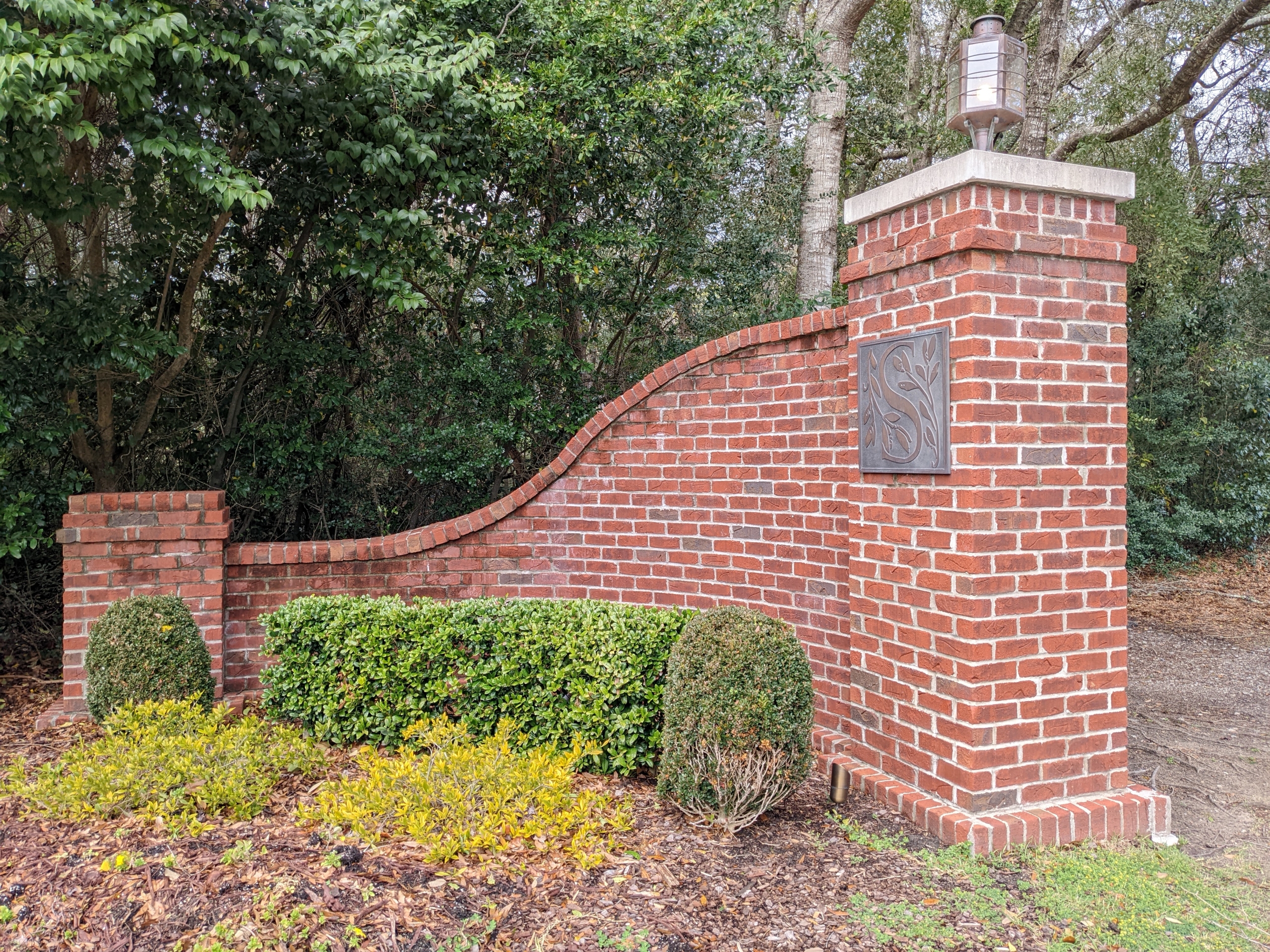
Stop Eleven
East Leonard Street
After going over the bridge, follow the path to the left to see the Pollinator Garden located at the edge of Lowe-White Park. This garden, established and maintained by the Southport Beautification Committee, is populated with native plant species, as well as host plants for specific insects, and other non-native plants that attract pollinators (e.g., zinnias, lantana).* Notice the human sundial and try it out if it’s sunny. The garden provides a quiet oasis for bees, butterflies, birds—and people!
Stop Twelve
East Leonard Street
Looking across the street from the Pollinator Garden, notice a very large loblolly pine (Pinus taeda) at the right front corner of the property on the city right of way. This species is found throughout the southeastern United States and is important commercially for yellow pine lumber used in residential construction. Exceptional specimens may reach a height of 160 feet and a diameter of 5 feet. The growth factor used in estimating the age of pine trees is typically 3.*
Circumference: 123 inches.
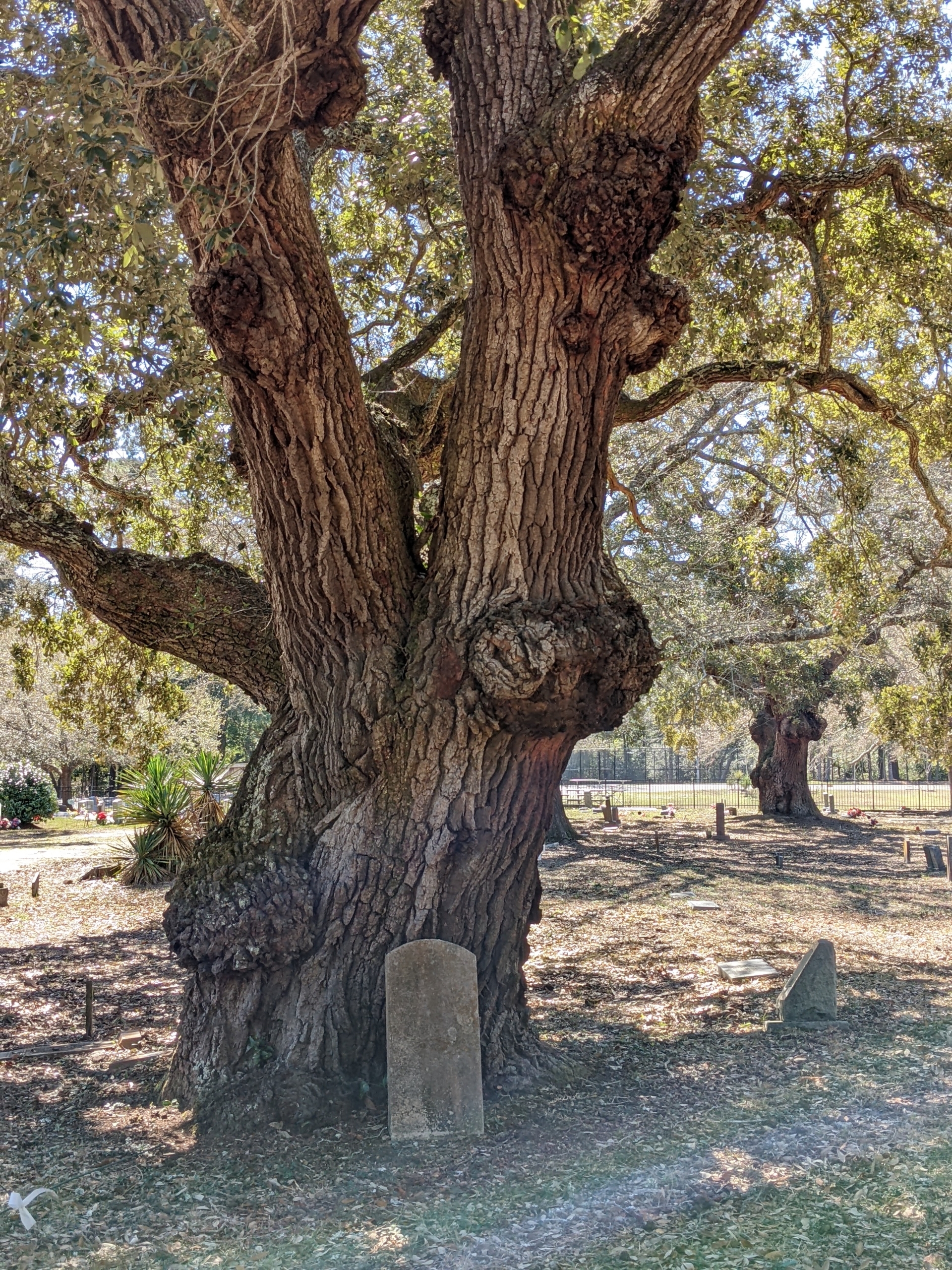
Stop Thirteen (Click here for Google Maps)
John N. Smith Cemetery, East Leonard Street
Go back to the main path, turn left, and carefully cross East Leonard Street. This cemetery was officially established in 1880 by the Colored Methodist Episcopal Church (now St. James AME Church) in Smithville (now Southport). Many live oaks and other native trees, including laurel oaks (Quercus laurifolia), eastern red cedars, and magnolias, also flourish here. The live oak growing in the middle of the graveyard is large enough to potentially have been growing close to the time the John N. Smith Cemetery was established.
Circumference: 178 inches.
Stop Fourteen (Click here for Google Maps)
Old Brunswick Jail
On East Nash Street, four large live oaks in front of the jail and 310 E Nash Street were likely young trees at the time the jail was built in 1904. Their current sizes reflect their ages.
Circumferences: 147, 158, 164, and 172 inches.

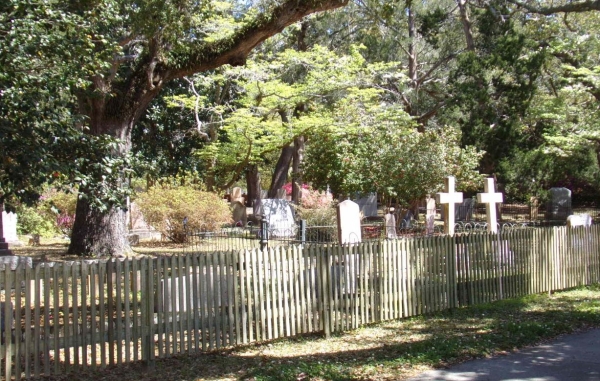
Stop Fifteen (Click here for Google Maps)
Old Smithville Burying Grounds, East Rhett Street
In addition to large live oaks—especially note one by the sidewalk on Rhett Street and two others inside the fence on Moore Street—the cemetery contains laurel oaks, eastern red cedars, magnolias, and a very large old dogwood (Cornus florida), not to mention all of the azaleas and camellias, which are large shrubs and bloom beautifully and colorfully in their seasons. Can you tell the difference between the live oaks and laurel oaks by their growth habits, leaves, and acorns (horizontal gnarled branches; rounded, cupped, dark green leaves; and elongated acorns, respectively for live oaks)? For more help, click here. Also, note the resurrection ferns growing on the live oak limbs.*
Circumferences: 138, 157, and 163 inches.
Stop Sixteen
East Bay Street
Continuing down Rhett Street to East Bay Street look to the left and notice the large live oak on the street near 405 East Bay. It has been battered by storms and lost several of its large limbs, evidenced by the scars that it bears today on the trunk. Can you spot something on the trunk that isn’t bark?*
Circumference: 216 inches.

Along your route…
Notice how on fully mature live oaks the interior of the tree is devoid of branches. This happens as the canopy pushes out and the interior of the tree no longer gets direct sunlight. The interior branches die and fall off, leaving the iconic structure of all fully mature live oaks.
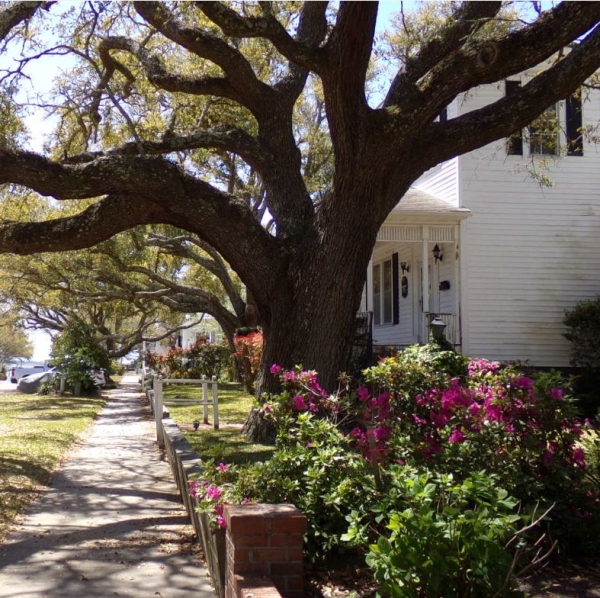
Can you find the house that has a notched roof to accommodate the large live oak?
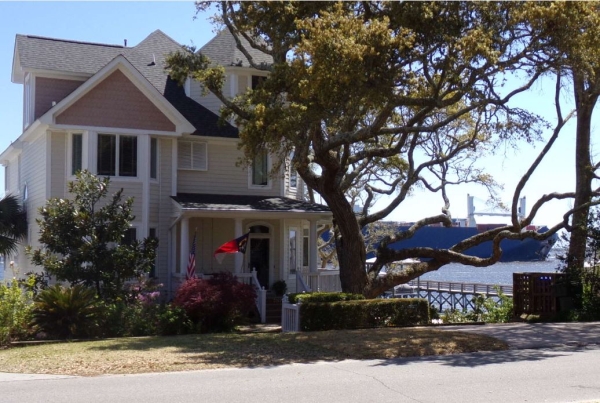
At one time, this large live oak adjacent to the Brunswick Inn had a large limb that crossed Atlantic Avenue before being lost in a storm. You can still see the large wound on the street side of this magnificent tree.

A row of live oaks frames the Cape Fear River and the Oak Island Light.
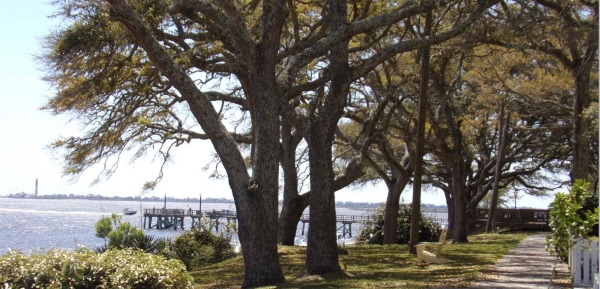
Stop Seventeen
East Bay Street
Shading a house from the back yard (not accessible), the “Bay Street Live Oak” is a member of the Live Oak Society, an organization whose members are the trees themselves, and the largest registered tree serves as the President of the Society. Have you seen a live oak today that you think should be a member of the Live Oak Society?
Circumference: 192 inches.
Stop Eighteen (Click here for Google Maps)
City Pier
Standing with your back to the pier, look to the left and right, and note that the foliage on the trees slopes toward the river. This is called the “salt line” or “wind line.” The growth of the limbs and leaves is stunted on the windward side by the salt-laden wind blowing off the ocean.

Stop Nineteen
West Bay Street
Can you spot the house with the cutout in the front roof overhang for the live oak likely growing there? Southport residents take their trees seriously!*
Stop Twenty
South Caswell and West Bay Streets
Several old, gnarled eastern red cedar trees have survived the worst of storms in Southport over the years. A large limb torn from one in a storm revealed over 110 growth rings, indicating that these trees were probably planted around the time the Thompson House was built just after the Civil War.

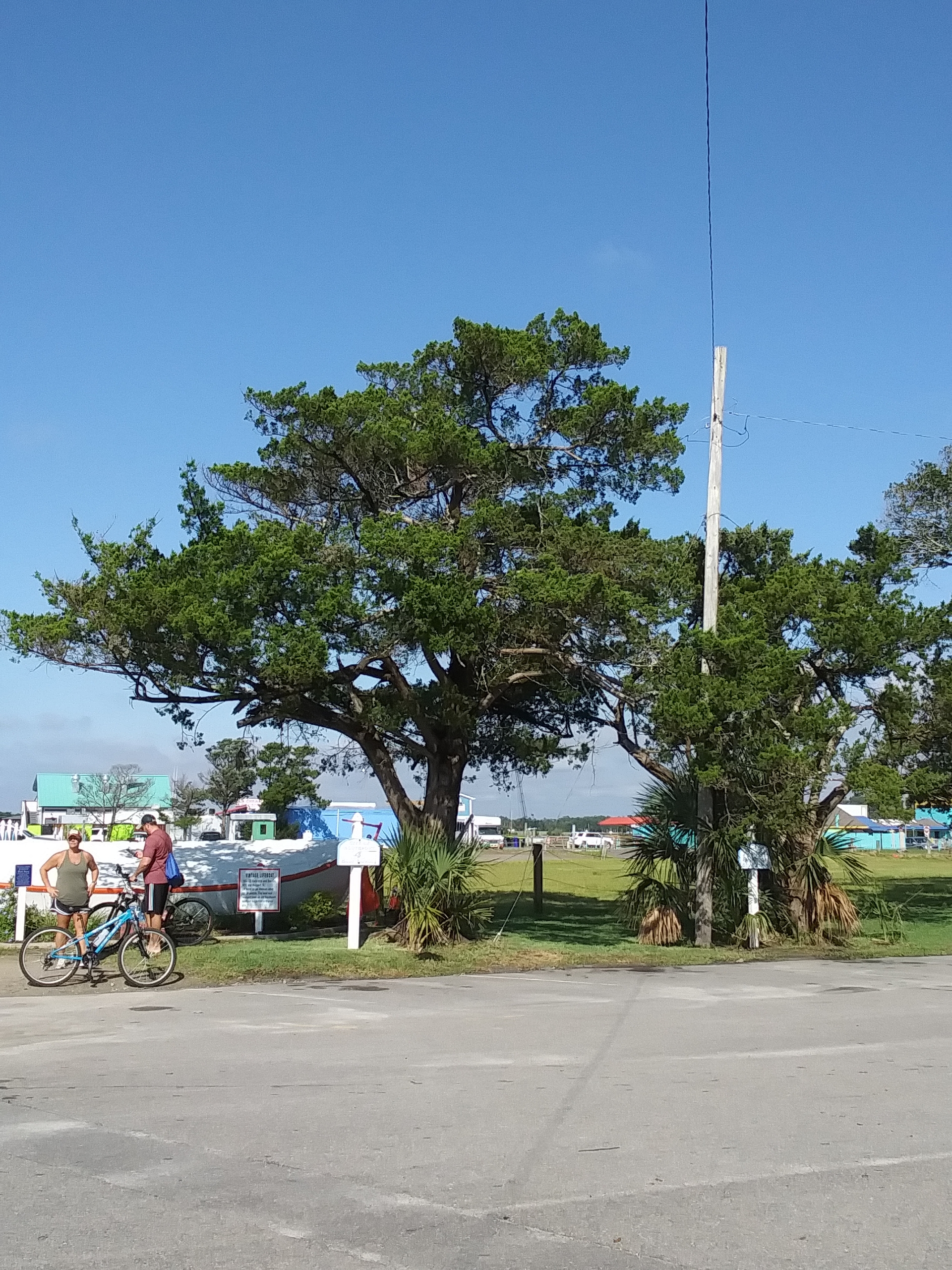
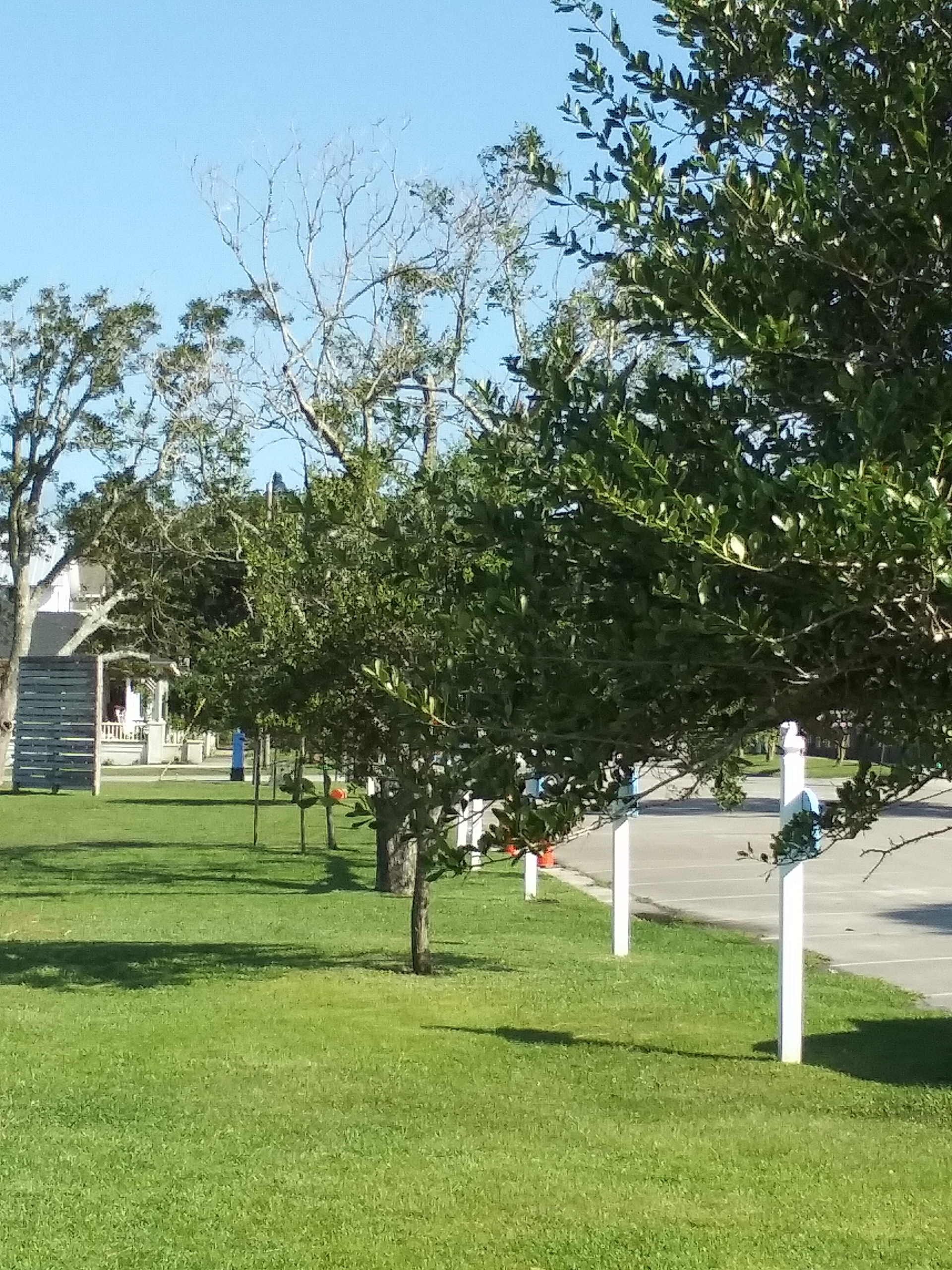
Stop Twenty-One
South Caswell Street
Along the first block of Caswell Avenue and along Moore Street towards the Yacht Basin are some of the new live oak trees that have been planted by the Forestry Committee to ensure that Southport will be covered in shade for years to come. Donations to the City of Southport for the purchase of young live oaks for planting are always appreciated.*
Stop Twenty-Two
North Caswell and West Nash Streets
As you walk along West Nash Street, take a moment to look up and down the street at the beautiful canopy of live oaks that have sheltered residents and visitors for a hundred years or more.
Circumferences for two of the large trees: 153, 161 inches.
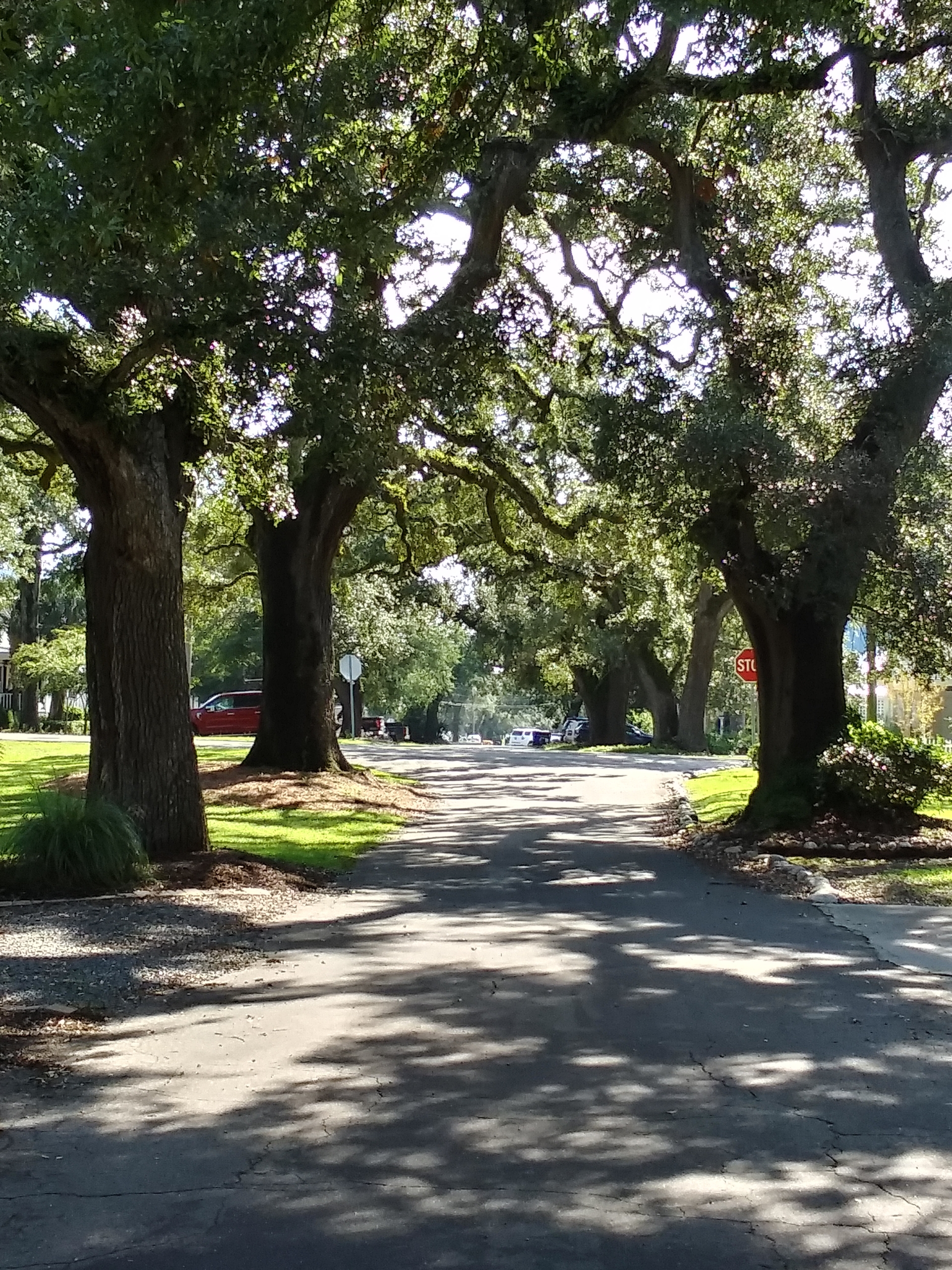

Stop Twenty-Three (Click here for Google Maps)
Keziah Park on South Lord Street
Local lore says that the Indian Trail Live Oak Tree in the park may be 400 to 800 years old and may have been used as a trail marker by Native Americans in the area.

Stop Twenty-Four
South Lord and Moore Streets
Note the typical sweeping downward direction of the limbs of the huge Magnolia in the side yard on Moore Street. DO NOT ENTER THE YARD. THIS IS A PRIVATE HOUSE. Native to Asia, eastern North America, and Central America, Magnolias may have evolved before bees, with the thick waxy blossom petals thought to be an adaptation to encourage pollination by beetles without causing damage to the plant. Cone-shaped fruits are produced in the fall.

Stop Twenty-Five
Moore and Howe Streets
Look up and down Howe Street and notice the absence of large live oaks hanging over the street. This is because they were all removed during improvements to widen Howe Street in the 1970s. Locals recall that at the time there were demonstrations against their removal, particularly by activist women. The Forestry Committee cannot plant new live oaks directly along Howe Street because it is a state road.
Stop Twenty-Six (Click here for Google Maps)
Maritime Museum
Although it can be seen with the naked eye, you can take a closer look at the Sabal Palm near the middle of Battery Island through the periscope inside the Maritime Museum. This palm tree is said to be the northernmost naturally occurring Sabal Palm known in the United States.*
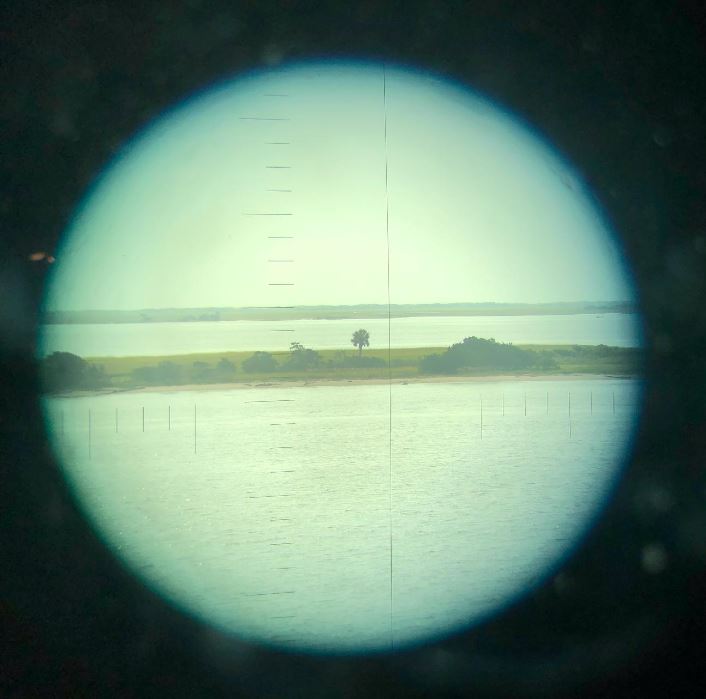
*Additional information associated with the indicated stops:
- The location of small gingko is on the northwest corner of Lord and Moore Streets.
- Locations of other pecan trees include, among many others throughout town, behind a house on East Nash Street in the block opposite the Old Jail and along East Moore toward the restaurants at the Yacht Basin.
- Could sitting in Franklin Park be an urban version of forest bathing? Read an article about the benefits of this practice to health and wellness.
- The large loblolly pine spotlighted on our tour is only one of the important pine species in our area. The long leaf pine is another that is historically important, and a discussion of its significance can be found in the June 2021 edition of the City of Southport Newsletter. To distinguish the longleaf pine from the loblolly pine, see this.
- Although very few of the live oaks in town display the hanging Spanish moss that’s associated with live oaks in other locations, they do have their own unique relationship with resurrection ferns (Polypodium polypodioides). When the weather is dry these ferns turn brown and appear to be nonviable. Immediately after a good rain, they spring to life again, green and healthy. They are epiphytes, or air plants, and do no harm to the trees.
- This tree has a chain embedded in its bark, used for hitching horses long ago. It must have been much longer before the trunk grew around it.
- The house at 120 West Bay Street has a cutout in its front overhang to accommodate a live oak tree; there is another at 310 West Bay Street. DO NOT ENTER THE YARDS. THESE ARE PRIVATE HOUSES. This approach may be problematic. To preserve and maintain the tree canopy that makes Southport beautiful and unique, the city has developed within a unified development ordinance (UDO) section (3.18) that contains requirements that address the maintenance of the canopy and provides guidance for preserving existing trees and suggestions for planting new ones.
- Tree Planting: Over the last 20 plus years, the Forestry Committee has worked with the City of Southport to plant over 400 trees to replace those lost to storms or age and to maintain or increase canopy (also see stop 3). Donations for the purchase of new trees are always appreciated.
- For a discussion of the place of palm trees in our local environment see the January 2022 edition of the City of Southport Newsletter.









